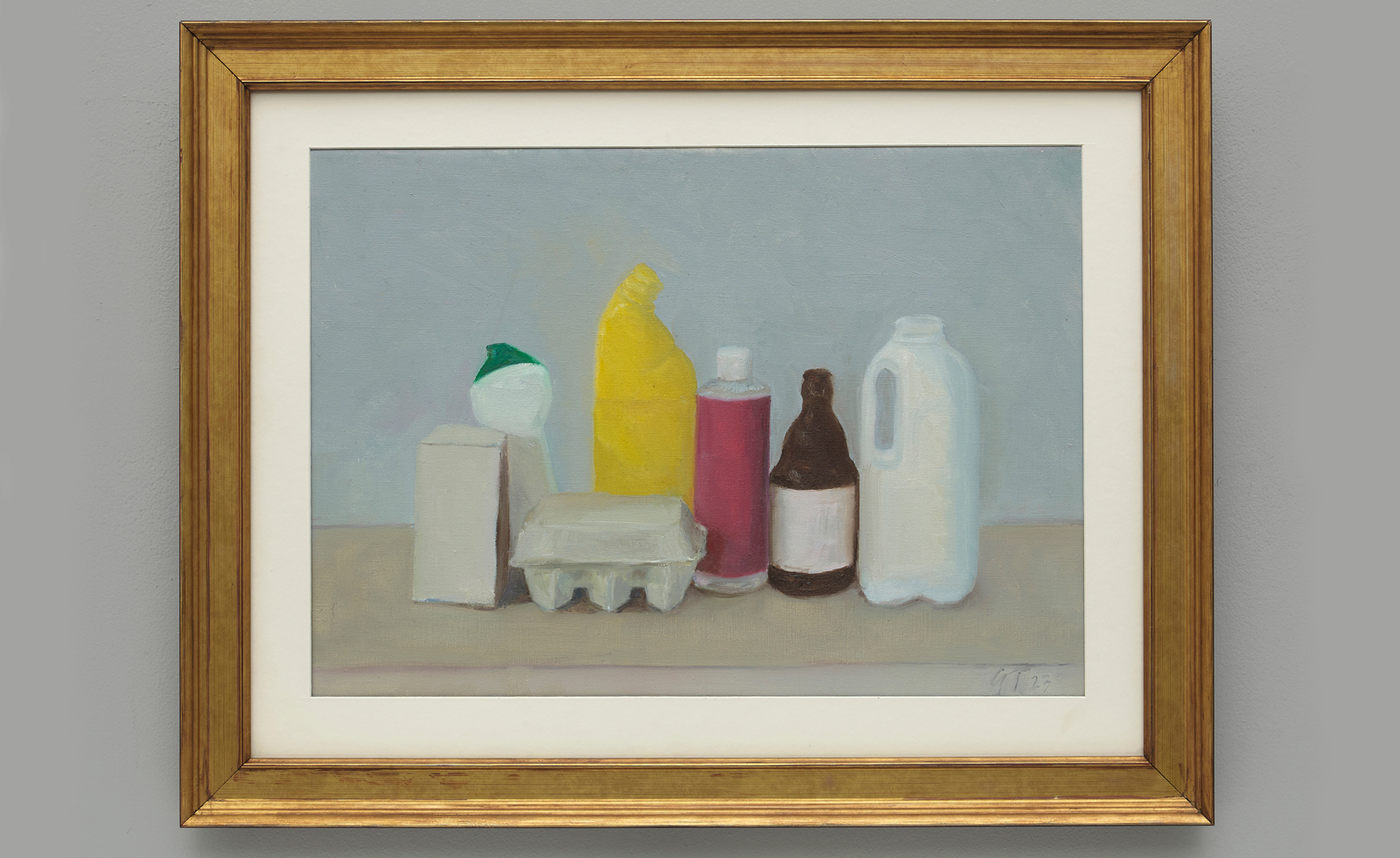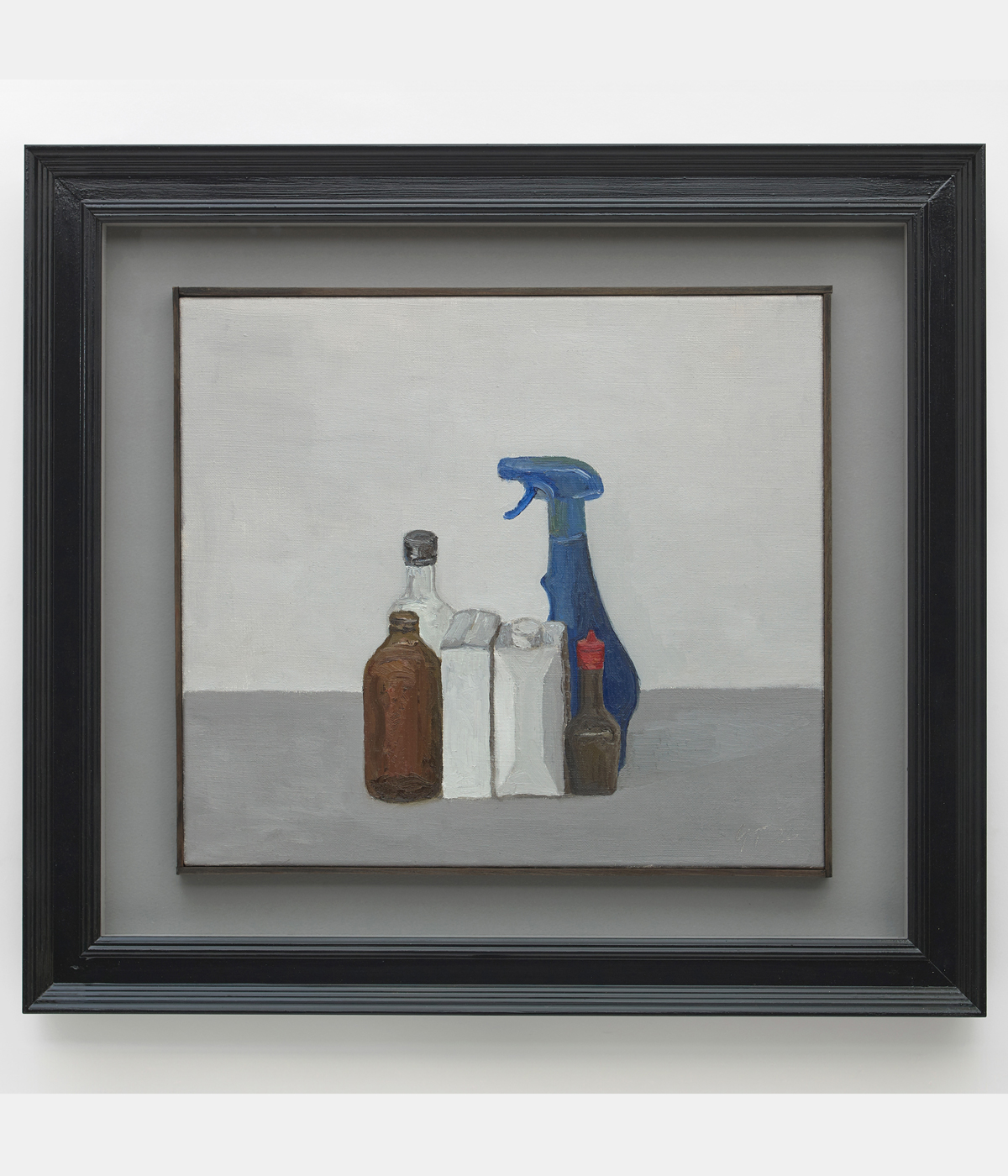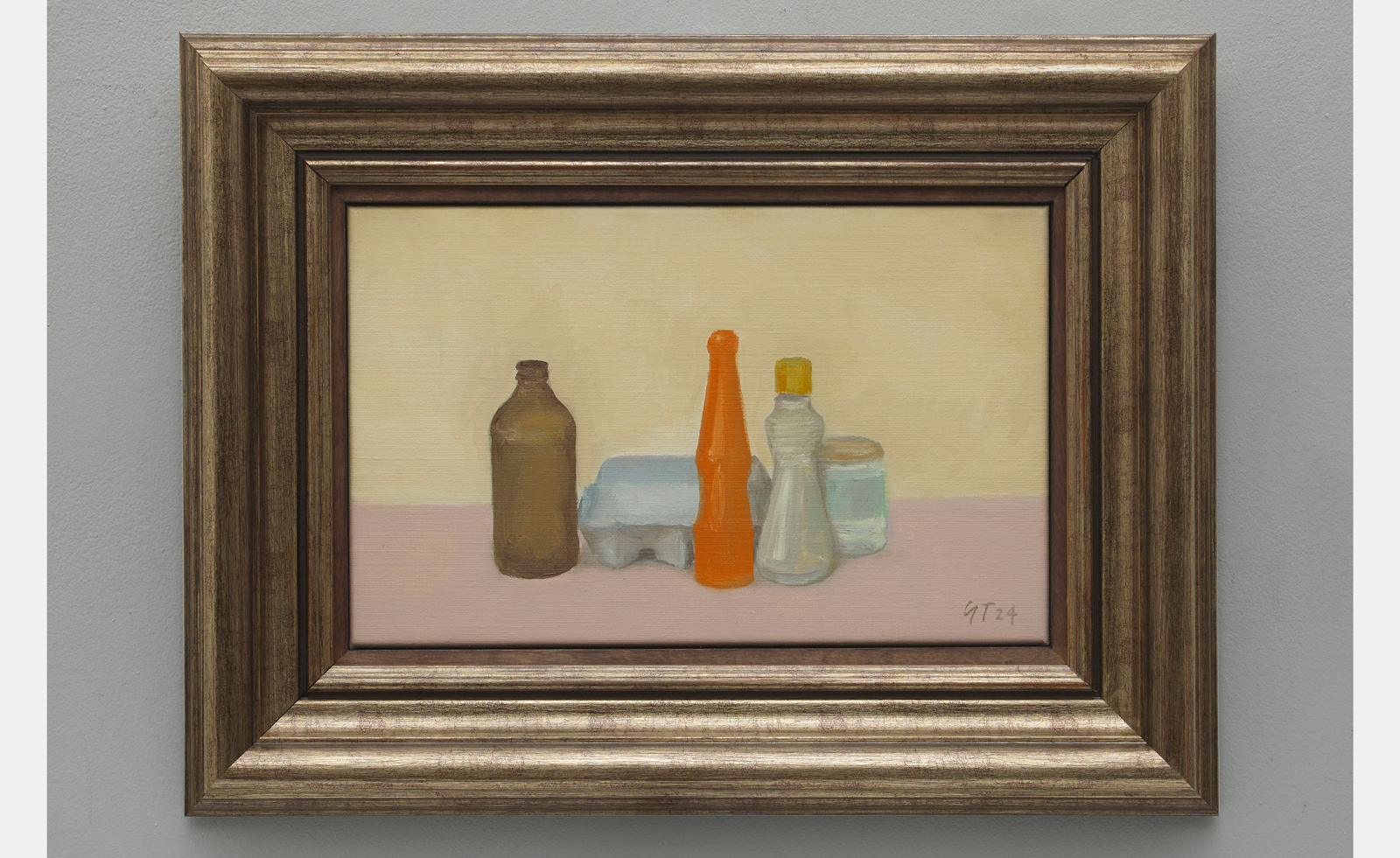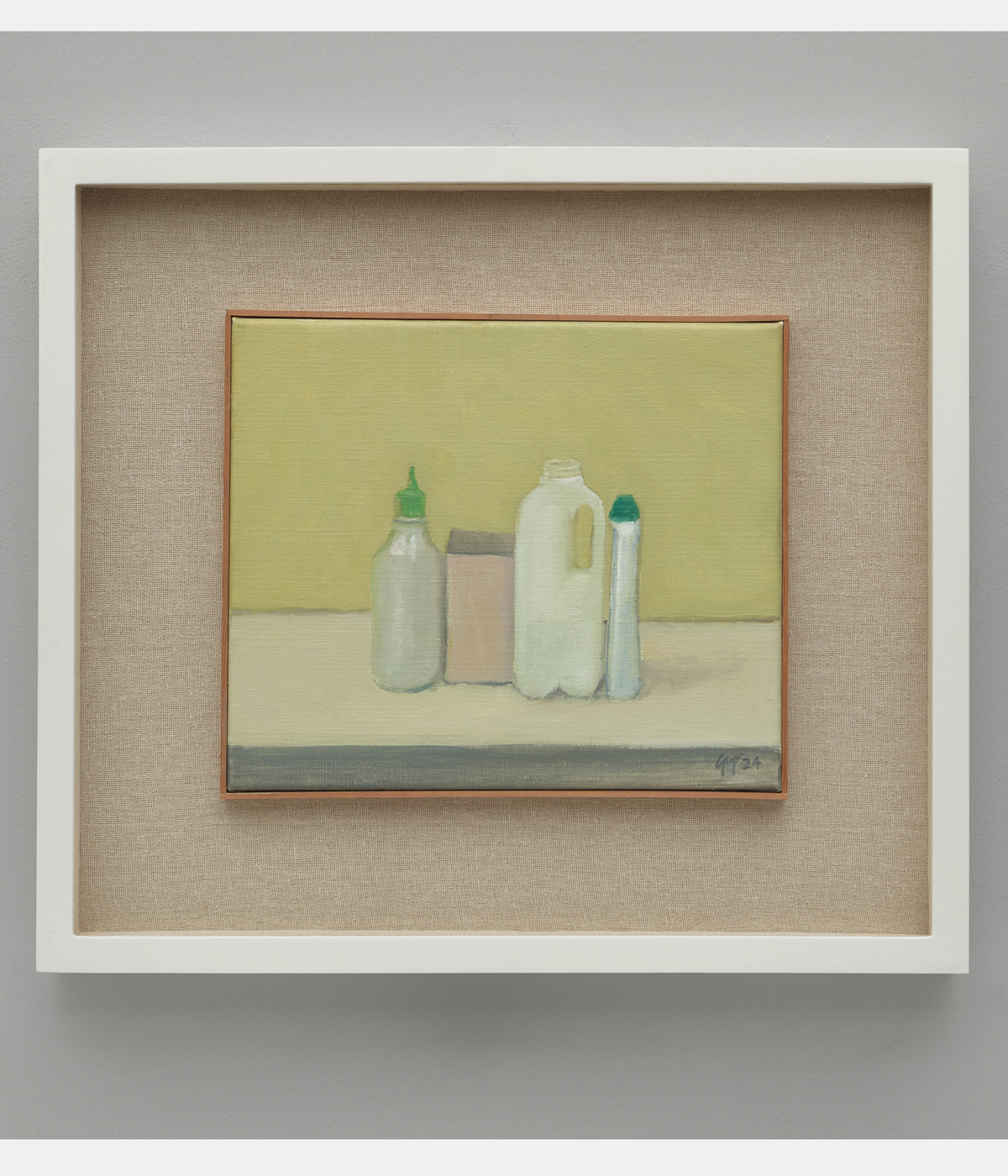
In his new series of paintings, British artist Gavin Turk presents arrangements of domestic and commercial packaging. Displayed against monochrome backgrounds, flattening the depth of field, the objects jostle for space and attention, the bright oranges, blues and highlighter-yellows of manufactured plastic countering the muted earth- and stone-tones of cardboard, jars, and eggboxes.
While these paintings affirm the artist’s enduring interest in consumer waste – the subject of his famous Bag (2000), a bronze sculpture resembling a black bin liner, bulging with rubbish, as well as recent watercolours of single-use plastic bottles – ‘The Conspiracy of Blindness’ also engages with the work of Italian artist Giorgio Morandi, best known for his own paintings of sleekly formed domestic objects. (‘My art is always other people's art,’ Turk told us in a 2023 interview, of his approach of referencing other artists in his work.)
Gavin Turk: ‘We are what we throw away’

‘One can travel this world and see nothing,’ said Morandi. ‘To achieve understanding it is necessary not to see many things, but to look hard at what you do see.’ Echoing the restricted palette and distinctive stillness of Morandi’s work, Turk’s paintings encourage us to ‘look hard’ at the objects furnishing our lives, brought into homes, often then buried in landfill.
In Turk’s hands, these accumulated objects acquire a sense of abstraction. Stripped of their identifying marks and labels, removed from their original contexts, the pure form of each bottle, box, or carton is permitted to take centre stage, at once recognisable and strangely defamiliarised, beautiful and oddly alien. Begun as an attempt to catalogue his own encounters with disposable packaging – what he has termed ‘an exercise in self-portraiture’ – Turk’s paintings confront our habits of consumerism and the global ramifications of the products that surround us.

The titles of each painting offer an index, both honest and exposing, of the items on display, restoring brand names and identities, as in the ‘Thai Dragon Siracha Hot Chilli Sauce’ and ‘Scala Vegan Basil Pesto’ of one canvas, or the tubs of ‘Delphi Foods Humous’ and boxes of ‘Maldon Sea Salt Flakes’ that recur in several paintings.
It is as though Turk’s series mounts a two-part challenge to the viewer: What would these paintings show if they were yours? Would you be happy to display them in a gallery in London? The work is reminiscent of Michael Landy’s installation, Break Down (2000), which saw the artist offer up his personal belongings (7,226 items) for systematic destruction, dismantled by a team of workers along a conveyer belt, an inverted production line.

Turk’s paintings subvert the conventions of traditional still-life painting. Where the lavish spreads of shellfish, fruits, and perishable flowers of 17th-century Dutch still life imply the inevitable rotting and disintegration of their contents, Turk’s plastic bottles and containers don’t so easily suggest a set of objects on the cusp of vanishing.
On the contrary, it seems almost possible that Turk’s paintings won’t outlive the very objects they depict, that his bottles of ‘Squeeze It Orange Drink’ may still be here long after we have disappeared. Turk’s new paintings confront us, boldly, with this legacy. As he so bluntly puts it: ‘We are what we throw away.’
Gavin Turk, ‘The Conspiracy of Blindness’ is at Ben Brown Fine Arts from 15 March – 10 May 2024







